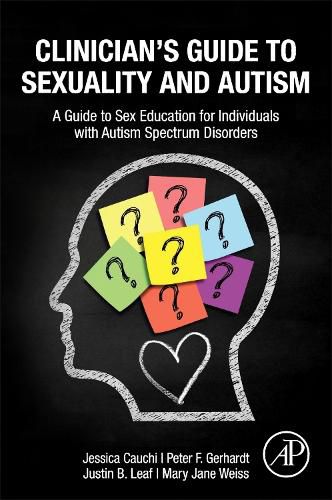Readings Newsletter
Become a Readings Member to make your shopping experience even easier.
Sign in or sign up for free!
You’re not far away from qualifying for FREE standard shipping within Australia
You’ve qualified for FREE standard shipping within Australia
The cart is loading…






Clinician's Guide to Sexuality and Autism: A Guide to Sex Education for Individuals with Autism Spectrum Disorders is the first book to provide clinicians with comprehensive curriculum of sexuality education skills for people with Autism Spectrum Disorders (ASD). Starting with the importance of teaching sexuality skills to people with autism, this book provides an outline and overview of the recommended teaching strategies (e.g., Behavioral Skills Training, Cool vs. Not Cool, video modeling). This book also reviews the fourteen skill domains directly related to sexuality, including the key skills one should acquire in each domain.
A timeline focusing on what skills should be targeted at what age and what skills to teach across the lifespan are also discussed. The curriculum covers domains that are often neglected in sex education for people with different disabilities in general (e.g. values, types of relationships, gender identity, or preferences). Additionally, this curriculum addresses component skills of sexuality in a way that allows early teaching to build upon areas of learning systematically over time, thus likely to have an improvement in teaching over time.
$9.00 standard shipping within Australia
FREE standard shipping within Australia for orders over $100.00
Express & International shipping calculated at checkout
Clinician's Guide to Sexuality and Autism: A Guide to Sex Education for Individuals with Autism Spectrum Disorders is the first book to provide clinicians with comprehensive curriculum of sexuality education skills for people with Autism Spectrum Disorders (ASD). Starting with the importance of teaching sexuality skills to people with autism, this book provides an outline and overview of the recommended teaching strategies (e.g., Behavioral Skills Training, Cool vs. Not Cool, video modeling). This book also reviews the fourteen skill domains directly related to sexuality, including the key skills one should acquire in each domain.
A timeline focusing on what skills should be targeted at what age and what skills to teach across the lifespan are also discussed. The curriculum covers domains that are often neglected in sex education for people with different disabilities in general (e.g. values, types of relationships, gender identity, or preferences). Additionally, this curriculum addresses component skills of sexuality in a way that allows early teaching to build upon areas of learning systematically over time, thus likely to have an improvement in teaching over time.